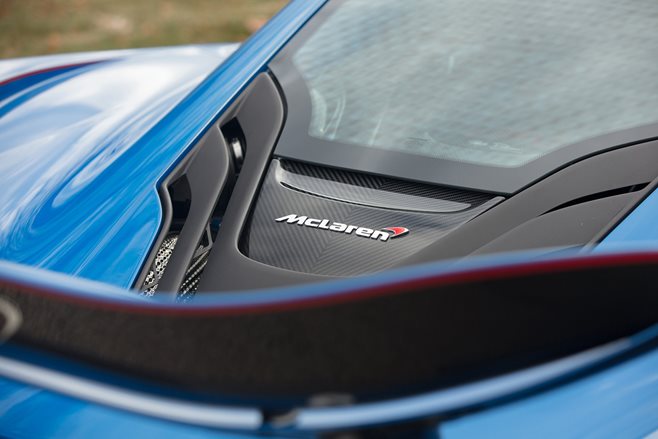“SENNA has 800PS on 1200kg, that’s about the power to weight that we’re looking for.”
That’s Jens Ludmann, chief operating officer at McLaren Automotive, and he’s talking about the ideal specifications of what he hopes will be the marque’s first purely electric road car. We’ll save you the number-crunching: 800PS is 588kW, a phenomenal amount of power for something that weighs the same as a Toyota 86.
For McLaren, any less than that wouldn’t be sufficient for a proper EV supercar. It’s also coincidentally nearly the same power-to-weight ratio as enjoyed by the Rimac Concept One, but McLaren wants to do things a little differently to the Croatian supercar start-up.
“We are investigating the pure electric technology for our products,” said Ludmann, speaking to Wheels at the Geneva motor show.
“We very closely look at what the technology can deliver, however we think for a pure electric vehicle the technology is not yet mature enough – and that has to do with the battery performance.”
Energy density is the issue. According to Ludmann, current battery technology is more than sufficient for everyday driving, but can’t manage the extreme charge/discharge requirement of racetrack use while also remaining light enough to preserve chassis agility.
Supercapacitors are off the menu too – McLaren is only looking at chemical batteries for energy storage. The tipping point of battery tech becoming viable for a McLaren EV seems distant.
“With pure EV, here at McLaren we still want our customers to be able to do 10 laps at a racetrack with full power on, power off, all the time,” he said.
“To do that you need a certain energy level in the battery and a certain power level that the battery can absorb and discharge. You need a very capable technology, and the battery technology today is not there for that requirement.
“To cruise in normal traffic for a certain distance you can do with today’s batteries, but again they’re very heavy so the power to weight is not very good – it’s not as agile.”
“To talk in numbers, the battery technology should achieve 500 watt-hours per kilogram. That is a level where it really makes sense. Today we are around 180 watt-hours per kilogram. So there is significant improvement required to get it where we want it to be.”
To put that into context, the 4.5kWh battery pack developed in 2015 by Rimac for the Koenigsegg Regera – and touted as the world’s most energy-dense automotive battery at the time – weighed 75kg, giving it a power-to-weight of just 60 watt-hours per kilo.
McLaren Engineering provides batteries for the current season of Formula E that boast an energy density of 216Wh/kg – but they’re purpose-built for those electric racecars with properties that are unsuitable for a road-going application. Achieving 500Wh/kg in a street-able vehicle looks like a tall order for the near future.
When will battery tech advance to the point McLaren’s engineers are satisfied? Ludmann says battery cell suppliers are estimating a five- to ten-year timeline on high-discharge rate, high energy density power storage. According to Ludmann, it’s the only thing holding a McLaren EV back from becoming production reality – every other aspect of the hardware, from motors, suspension and braking, is already sorted.
“It’s all resolved – easy. That’s not a problem at all, all the rest is not a challenge,” he said.
“But speaking of challenges, there’s a customer expectation question on the NVH behaviour: how does the car sound?
“If you do a pure electric car, what sound can you expect? That’s another question for the products that we do. The other cars that do pure electric are just for transportation purpose. Our cars are for entertainment purposes.”

